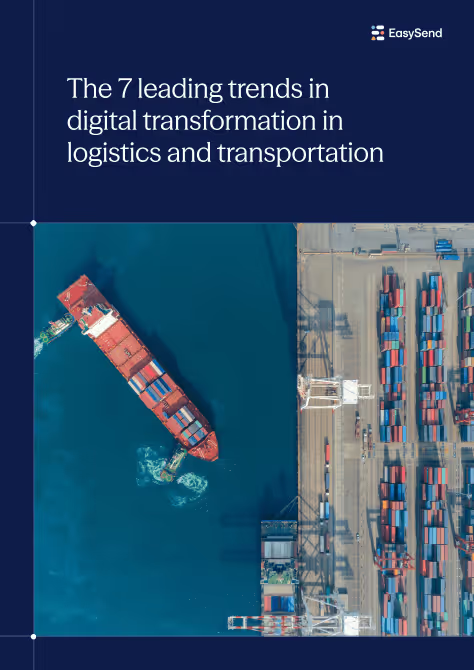The era of digital transformation in logistics and transportation
There's never been a better time for innovation. The impact of digital transformation on logistics has been significant and it impacts every link in the logistics value chain.
However, logistics and transportation companies have been slower to adopt digital innovations than their counterparts in other industries. This sluggish to embrace change is creating enormous risks for even the most established players in the business as they face the need to adapt to harsh and rapidly shifting market conditions:
- The ongoing pandemic has further exacerbated the decade-long shipping crisis, squeezing the already thin profit margins even further
- The supply chain disruptions that started at the beginning of the pandemic continue to reverberate across the logistics value chains
- The pandemic has limited the construction of new mass transport systems, affecting global supply chains and creating difficulties with the last-mile deliveries
- Logistics companies are spending billions to meet the challenges of changing environmental regulations, and the regulatory environment is expected to continue to be a major concern
- Competition is also heating up. Technology startups are disrupting the industry, often building proprietary platforms that 'own' the customer and their data. Meanwhile, retail giants are moving into the logistics space, building their own service networks following in Amazon's footsteps.
Logistics companies are adapting their business models to fit changing customer expectations. Smaller, more agile, and responsive organizations will prevail over slower-moving legacy firms with outdated methods of operations in this new environment.
In logistics, digital transformation is driven by the need to reduce operational costs, improve customer service and grow revenue streams. Looking forward, there are many trends that all logistics companies will need to contend with as they make their way into the future of transportation and distribution.
This ebook will explore 7 leading digital transformation trends in logistics and how various transportation companies address the challenges associated with this shift.
1. The rise of the 8th R in logistics and prevalence of data
The Chartered Institute of Logistics & Transport UK defines the 7Rs of logistics as:
Getting the Right product, in the Right quantity, in the Right condition, at the Right place, at the Right Time, to the Right Customer, at the Right price.
[.emph]In 2021, the 8th-R is becoming more and more crucial - The Right Customer Experience.[.emph]

Shortening lead times can be a cost driver, but the overall experience is becoming a number one priority for customer satisfaction.
Across all 8-Rs, data is becoming a mission-critical commodity. Mobile devices, sensors, satellites, digital journeys, CRM and ERP systems, and other connected technologies generate an unprecedented amount of data that is fueling digital transformation in logistics through predictive analytics. To provide the best customer experience, the data must flow freely between the shop-floor and the top-floor:
- From machine-to-machine interactions and IoT data
- The information stored in ERP and CRM systems
- Behavioral data generated by digital customer-facing apps
Leveraging this ocean of data to improve customer experience requires sophisticated planning that involves leveraging predictive analytics and connected technologies to maximize efficiency and automating manual workflows and processes to remove inefficiencies, and keep customers updated and engaged every step of the way.
2. The rise of digital journeys and digital experience in logistics
As the world becomes more dependent on digital technologies for its efficiency, retail and the B2B customers alike expect a seamless customer experience. Providing exceptional service becomes even more important when looking at how these macro-economic and competitive forces impact the logistics sector. Yet, 85% of transport and logistics leaders say their businesses cannot define a differentiated customer experience.
[.figure] 85% [.figure]
[.emph]of transport and logistics leaders say their businesses cannot define a differentiated customer experience.[.emph]
Transportation and logistics companies must focus on how to deliver the best experience. Those who know their customer well will be more successful in achieving this goal than those who do not or only focus on one part of the process (such as distribution only).
When considering to become more customers focused, transport and logistics companies need to address two key challenges:
- Understanding what IS a good customer experience
- Becoming a customer-centric organization by ensuring a strong, consistent experience across every channel
[.emph]Not surprisingly, the sector is seeing investment in technology that brings greater customer-centricity. One such technology is digital journeys.[.emph]

What is a digital journey in logistics?
Digital journeys comprise a series of triggers and actions that automate your customer communications. The important difference between a digital journey and an eForm is that a digital journey is comprising the entire to-end experience - from data collection to eSignatures and document uploads, the entire workflow can be fully digitized from the ground up, eliminating the need for paper-reliant and manual workflows.
The way that your customer moves through a digital journey is dependent on the actions that THEY take, but the workflow itself is designed to match the business needs of the business.
Both the triggers and actions that comprise a digital journey, as well as its look and feel can be tailored according to each logistics provider's business requirements. Digital journeys in logistics can take many forms and may include areas such as:
Customer Service
Helping customers with their needs through the journey, from pre-purchase to post-delivery.
Supply Chain Optimisation
Streamlining manual supply chain processes to minimize costs and improve efficiency, such as for example contracting, quoting and billing.
Warehouse Management
Reducing amount of manual, paper-reliant workflows in warehouse management brings with it leaner inventory management practices and greater visibility.
Supply Chain Management
Digital journeys can empower logistics organizations to manage and improve intralogis. Keeping all data centralized and in one place and keeping track of communications digitally is the key to digital experience. Managing the entire supply chain without paper through digital journeys has a tremendous ROI in terms of both efficiency, and the quality of data flowing into the internal systems.
Onboarding New B2B Clients
For example, onboarding for distributors and multiple brands in food and beverages industries is often a manual and paper-heavy process that can be transformed into digital journeys.
Onboarding New Vendors
For distributors who are looking to onboard new vendors, the process can be streamlined and digitized from the ground up.
Back Office Manual Data Entry
Transportation and third-party logistics providers often rely on manual data entry to drive core business activities. These manual tasks are time-and labor-intensive and result in significant inefficiencies and bad data. This problem can be solved by digitizing the point of entry via digital journeys of such tasks as:
- Scheduling and tracking shipments (Track and Trace)
- Gathering freight bill payments
- Quoting and contracting
- Generating and collecting on invoices
- Resolving payment disputes
- Securing proofs of delivery
- Warehouse and terminal management
- Correction and completion of transport orders

All these can be transformed from boring, inefficient paperwork into digital experiences via digital journeys.
[.emph]Digital journeys are highly adaptable to support complex, multi-party workflows, make employee's day easier, and to make work more efficient. [.emph]
As a result, your employees will spend less time pushing paper and eliminate manual and duplicate efforts.
Digital journeys can then be integrated into existing workflows such as online ordering processes, compliance, billing, and contracting processes, including eSignatures and order tracking.
Digital journeys are central to the customer experience and logistics companies are increasingly focusing on seamless, personalized, and transparent journeys that offer a digital-first approach for their customers.

3. Focus on innovation and startup partnerships
Logistics companies invest very little in startups. To put this into perspective:
- the top 10 US banks invested more than $580m per year in fintech startups from 2012 to 2018.
- At the same time period, logistics firms from the logistics industry invested less than $2m a year.
This is despite the fact that the US logistics and financial services industries make up a similar percentage of the global GDP. There are many possible reasons. First of all, logistics is a very asset-heavy industry. But one of the most crucial reasons is conservative culture and risk-aversion. However, sticking to the old way of doing things is no longer feasible.
[.emph]Logistics providers must embrace progress in most aspects of the business, from organizational development to communications, sales or marketing, and new and innovative business models.[.emph]
To offer new services and digitize, large market players are increasingly partnering with startups to drive innovation twith investments in R&D, incubators, or IT infrastructure. Logistics providers are investing in diversified innovation portfolios to replace outdated (non-IoT) technology as quickly as possible to reduce risks, and partnerships are growing across multiple verticles including smart fleet mart fleet- and route planning, last-mile delivery, team management, and various other automated processes.
These partnerships are mutually beneficial, as startups get the much-needed funding to drive innovative products to market while logistics providers receive innovative solutions while minimizing the technological infrastructure needed as an initial investment.
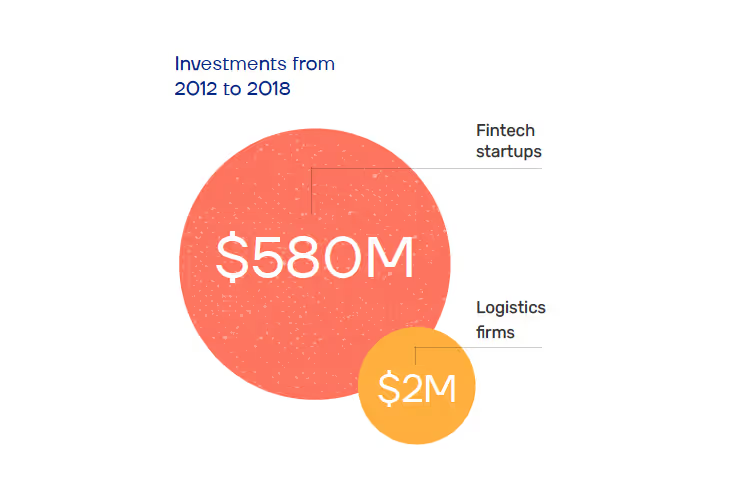
4. The rise of new business models in logistics
The rise of platform age in logistics
Traditionally, the logistics industry relied on large networks of agencies. This model, is being supplanted by the platform model, which is both more efficient and preferred by the customers, as it provides more control over the purchasing process.
A great example of an industry that underwent 'platformization' is the tourism industry and the rise of booking.com, Airbnb, and others. Logistic platforms are still in their infancy, but are posed for an explosive growth.
Some logistic companies reject the platform model because they have 'always worked with agencies', This approach is dangerous, as companies who are too afraid to innovate will have a difficult time competing with digital-first newcomers soon enough.
[.emph]Companies too afraid to innovate will have a difficult time competing with digital-first newcomers soon enough.[.emph]
The importance of the last-mile delivery optimization
The last-mile distribution is the focal point of innovation today. Heavy traffic in urban areas, combined with new environmental legislations such as diesel bans or electric-only areas, make it difficult to answer the consumer demand for same-day or even-same hour deliveries for consumer products.
Consequently, a whole host of innovative startups specializing in last-mile delivery, urban distribution, and delivery drones is quickly gaining traction.
'Click and collect' models, such as the one available at Walmart's or global fast-fashion brand Zara's popular services are already thriving in densely populated areas.
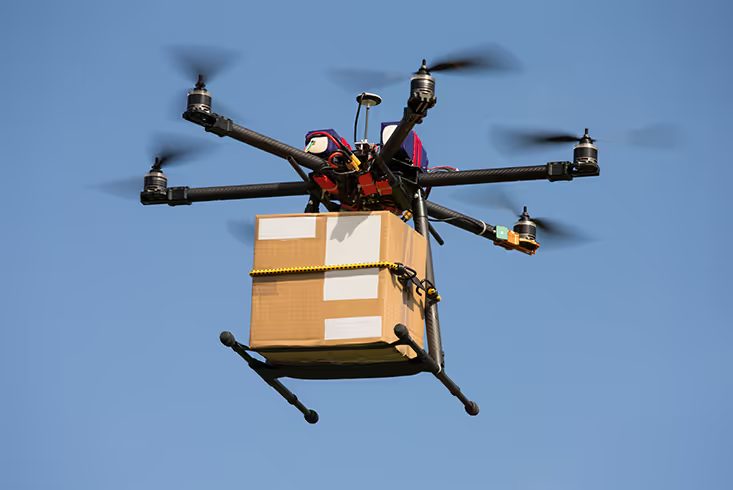
Showroom concept
One interesting innovation for retail is the showroom model. Retail stores are transforming into showrooms for designs that can either be ordered online or can be bought in-store to be 3D printed at home, such as clothes or tools.
[.figure]25%[.figure]
[.emph]Online fashion retailers return rates, which is more than eight times higher than in other retail sectors (3% on average)[.emph]
Online fashion retailers return rates are nearing 25%, which is more than eight times higher than in other retail sectors (3% on average). Especially in fashion, the showroom model minimizes the problem of people buying multiple items online in order to try at home to pick the best fitting size or color, damping the pressure on supply chains, warehouses, and the support staff created by high rates of returns.

Gig and sharing economy enters the logistics space
Beyond retail and the last mile, 'core of logistics' is also being disrupted with innovative sharing economy concepts such for example:
- CargoX ('Uber for Trucks')
- Postmates -A crowd-based local delivery app
- CargoHound - an online marketplace for international freight
The data hub model
In addition to traditional services, logistics providers are starting to serve as data hubs.
In this sense, a data hub means providing the infrastructure to purchase product designs that can be used to print the specific product elsewhere.
A customer could design a piece of clothing and have a single service take care of procurement, production, and distribution end-to-end. The Print-on-demand model is already available and extremely popular for shirts, but this model is likely to grow into other sectors as well.
5. Data and information at the core
Data is at the core of Logistics 4.0 evolution. It drives everything from marketing and sales to supply chain and warehouse management.
- Digital data collection - The first leading trend is coherent and accurate data through digital data collection methods.
- Connecting disparate systems - The second trend is data unification. One of the biggest challenges for logistics companies is making sense of the fragmented information kept in siloed systems. An organization with legacy systems disconnected from digital front-end tools often lacks a single version of the truth, making optimizing processes and customer experience challenging.
- Automating workflows - Logistics and transportation companies need to be able to store, process and analyze data about customers, suppliers, products, and services. Data can be collected automatically from machines while they work via digital tools that collect data or by humans with IoT devices on logistics processes. Therefore, automation and replacing manual data entry methods are crucial.
- Data-driven action - The focus now is not simply to collect the data but to ensure that the data flows freely between systems and is available to drive decision-making and optimization every step of the way.
- Supply chain visibility - Improving the end-to-end visibility for the entire supply chain as well as most other relevant sub-processes is crucial. These business connections are often hidden from view in logistics, with siloed data that is often completely isolated. Making these data points visible and transparent is a powerful boost to optimizing processes and operations.

6. Corporate social responsibility in supply chain management
Social movements are affecting business models. Many logistics operations, especially when it comes to retail or manufacturing, often depend heavily on exploiting vulnerable workers abroad. The moral implications of profiting from unequal conditions worldwide are becoming a vocal issue in the developed world.
The change in consumer and business partner reactions and public attitudes towards these issues makes it harder for companies to get away with ignoring these implications any longer.
This is another push that drives logistic organizations towards investments in technology to limit the necessity of manual labor through automation.
[.emph]This shift opens new possibilities for robotics and AI-driven business models, removing complex, mind-numbing tasks from human workers. [.emph]
One example of such innovation is Waymo's pick-up and drop-off services.
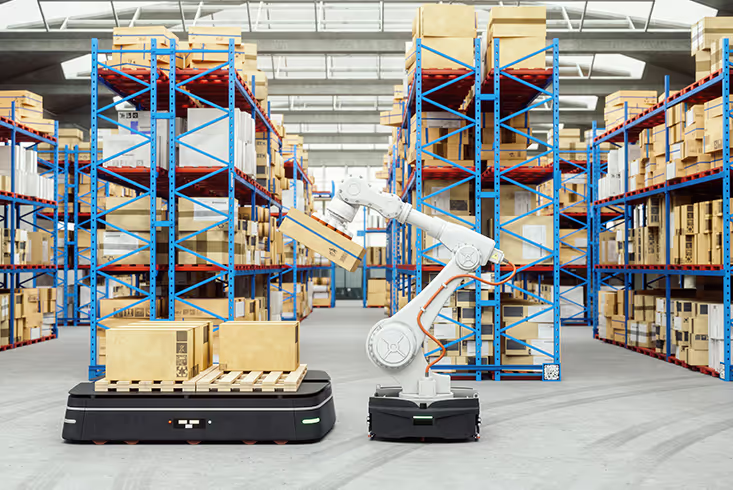
7. Lowering the bar with no-code/low-code development
Innovation always bears risks. One option for getting prominent and skeptical market players to join the digital transformation game will be lowering the risks for decision-makers.
One example of a technology capable of 'lowering of the bar' is no-code development. Instead of relying on IT teams and outsourced consulting firms for traditional development projects that are expensive and often take months to complete.
[.emph]No-code projects offer “accelerated digital transformation” with projects that can be completed quickly and at a fraction of the cost. [.emph]
What is no-code?
No-code platforms are changing the way people develop software. Instead of programming code, these platforms utilize drag and drop interfaces that allow business users to build applications without coding knowledge.
Low-code/no-code platforms help create internal business apps and digital customer journeys without the need for advanced coding knowledge. These systems work in a combination of Drag&Drop interfaces and templates, which enable business users (referred to as citizen developers) to create new applications to support their work without the need for a single line of code.
Crucially, no-code apps can be built based on existing workflows, spreadsheets, and databases, providing speed and flexibility at a fraction of the cost of traditional digital solutions.
What is crucial, especially when competition is at its peak, is that these no-code applications are highly customizable and can be updated with just a few clicks.
Low-code technology is projected to increase over the coming years. By 2024, Gartner projects that 75% of companies will have used at least four low-code tools for both the IT teams and the citizen development needs.
As we argued above, automation and agility will be the leading drivers of competitiveness within the logistics industry. No-code tools provide an advantage to logistics firms by enabling the rapid digital transformation of customer experiences.
While some companies are spending months investing significant funds and budgets into developing new digital products, others have already digitized their operations using no-code platforms, gaining a significant advantage with the agile approach to digital transformation.
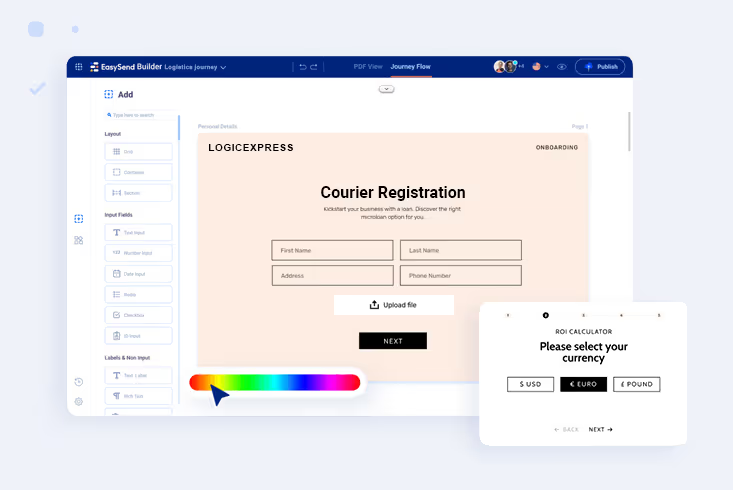
Welcome to Logistics 4.0
Logistics 4.0 is a way to describe the evolution we are witnessing right now. Logistics companies are no longer just shipping goods from one point to another; they have become strategic partners involved in every step of the process from purchase to delivery and beyond.
- Logistics firms are concerned with manufacturing and transporting the product and how customers will buy it.
- Consequently, logistics firms need to be more agile and flexible to meet customer demand on any platform
- Digital technology and customer-centric approach powered by data are the driving forces pushing the industry forward
The global business environment will continue to change frequently and quickly in the upcoming years. The pressure on margins in the logistics and transportation sectors requires digitization, automation, and a focus on new business models and customer experience.
The logistics and transportation players that are faring the best in these uncertain times are those that embrace change, anticipate future trends in the industry, and adapt their sales and marketing processes to meet new consumer demands and deliver the customer experience buyers want.
Digital journeys powered by data are becoming crucial tools to boost profitability. Engaging with customers throughout the buying journey and focusing on delivering outstanding experience end-to-end with eSignature powered journeys are essential to succeed in 2021 and beyond.
EasySend is a no-code platform that transforms any manual process in logistics into a digital customer journey, empowering logistics organizations to embrace an agile approach to digital transformation, improve customer experience and boost profitability.
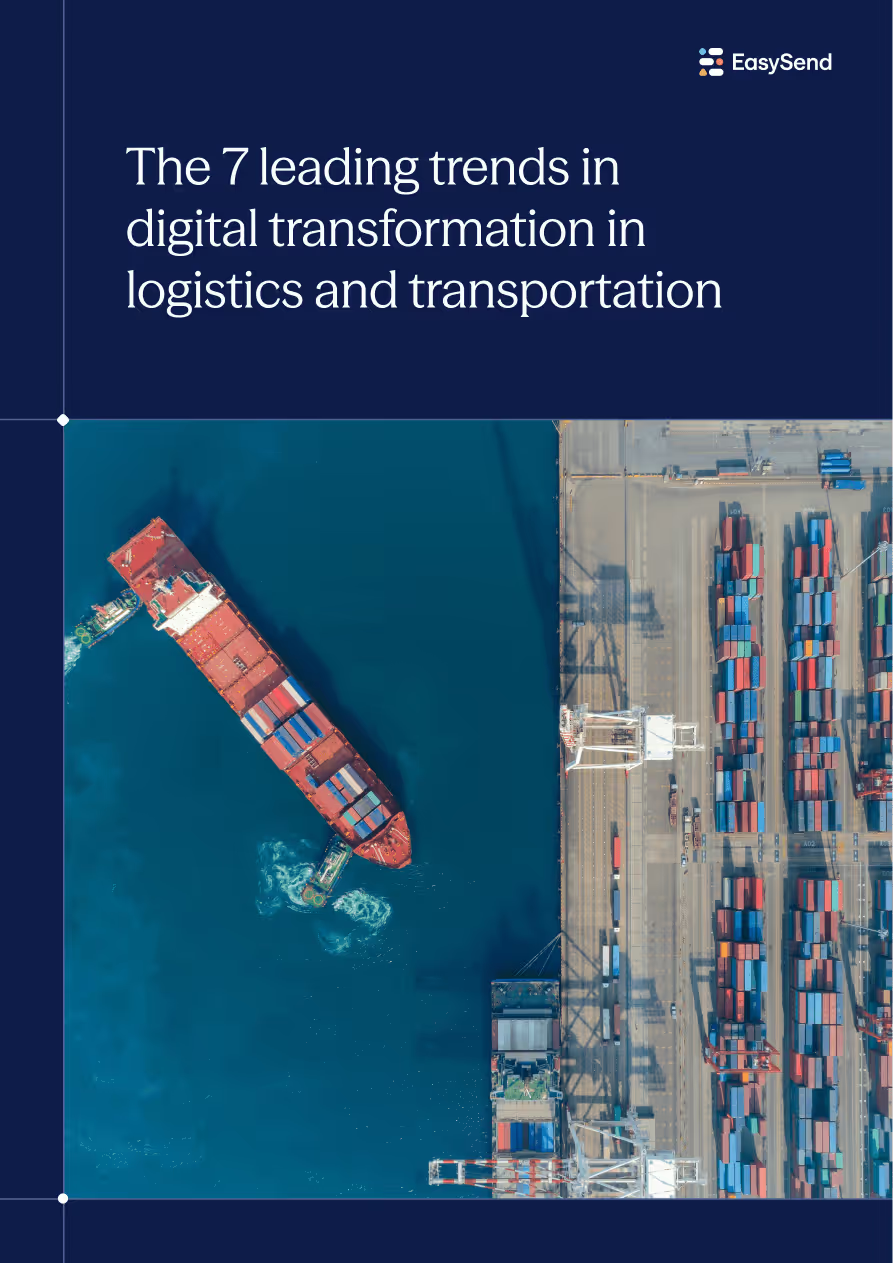



.avif)
.avif)


